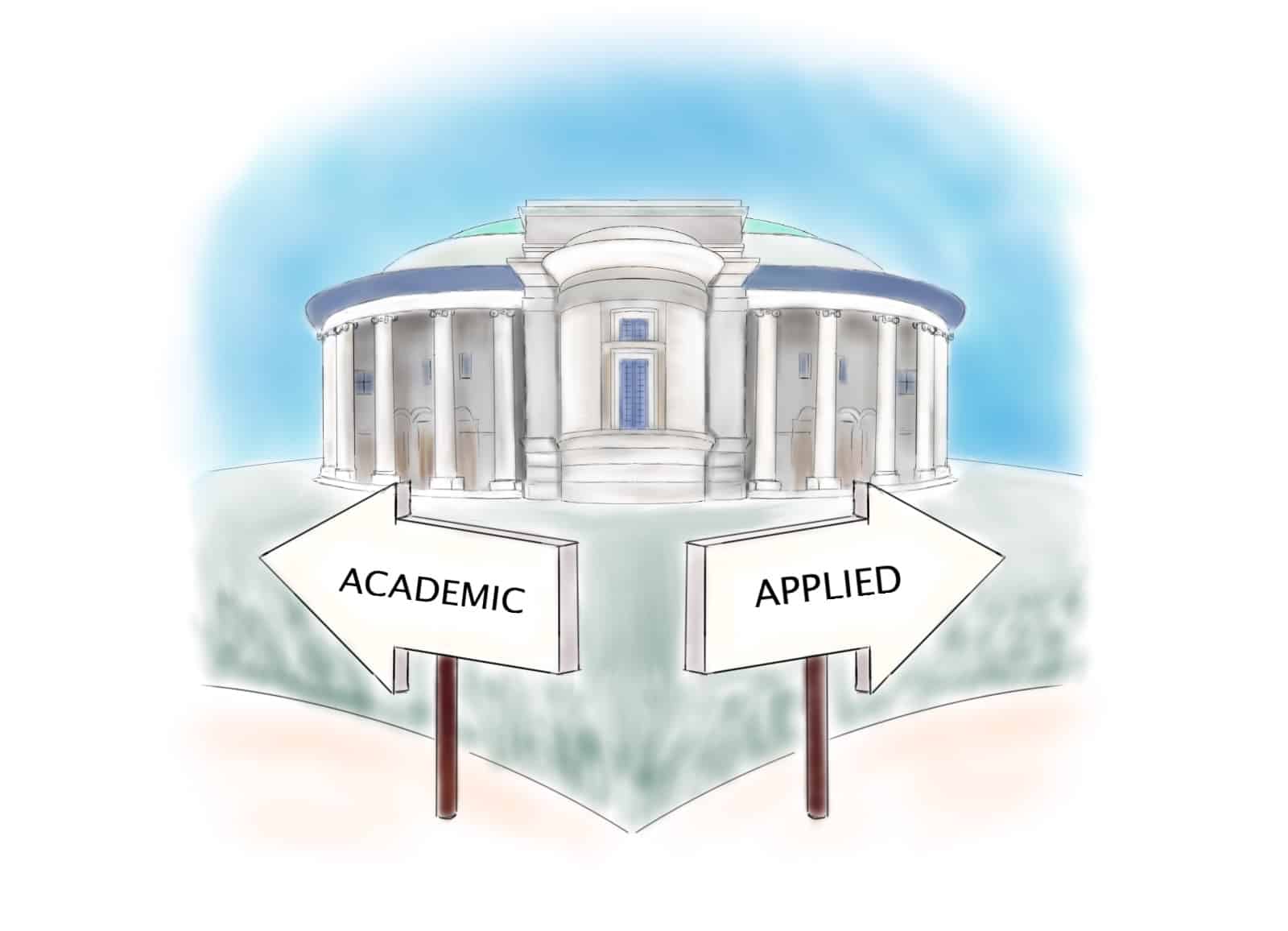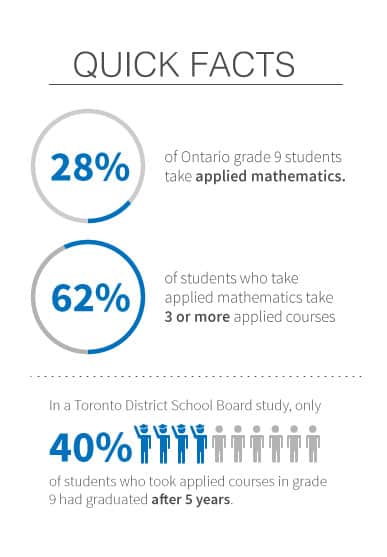People for Education, an independent organisation working to support public education in Ontario, have released a report urging the province to scrap streaming in Ontario high schools at least for the first year of high school. Although the streaming system was officially eliminated in 1999, the report alleges that it was eliminated in name only, and that the practice continues.
Ability Grouping vs. Streaming
Streaming, also known as “tracking”, involves the formal separation of students into different groups according to academic ability. Grade 8 students are currently asked to choose between taking either “applied” or “academic” courses in their core subjects, which commence in Grade 9. These decisions, the report says, not only affect students’ options throughout the rest of their high school careers, but also have a negative affect on their long-term, higher education prospects.
The report states that over half of students who take Grade 9 applied math also take at least three other subjects in the applied stream, and that very few students transfer from the applied to the academic. Just three per cent of schools report students moving from the applied stream to the academic, and 43 per cent responded “never” or “not very often” when asked how often students transfer from applied to academic courses.
“In almost all cases, students in applied courses are in different classrooms, receive instruction from different teachers, and study a different curriculum than those in academic courses,” reads a portion of the report.
Ability grouping, on the other hand, sees students being informally grouped within classes for short periods of time, arguably allowing them more mobility. Streaming is different from ability grouping, therefore, by formality.
“I think that such an early separation is actually detrimental to students because it forces them to make decisions before they really know enough to do so” comments Angela Sun, a fifth-year political science major at the University of Toronto. “I know so many students who either transferred out of university or decided to do a college program after completing their degree. I think all students should receive the same stream of education so they won’t feel boxed in by their course selection when it comes to deciding on their post-secondary path.”
Effects on access to post-secondary education
The same report suggests that forcing decision-making in Grade 8 influences students’ access to universities.
It goes on to detail a negative socioeconomic association with students who take applied courses, specifically that students who come from low-income families are more likely to be enrolled in applied courses.
“At my school, it was believed that the applied stream was for lazy people who didn’t want to take university courses.” explains Roxanne Mosu, a Speech Language Pathology student at U of T. “I also believed that the people who took those courses had no intention to pursue an education in university.”
Virginia Cardinal, a U of T graduate, adds that she too “thought that those students weren’t as smart or had a different kind of smart compared to those in the University stream.”
“It is time for Ontario to consider adopting OECD recommendations and move these important decisions to later in high school,” concludes the report. “In the meantime, students as young as 13 years old and their families are forced to make choices that may have long-term implications on their chances for success in school and beyond.”



